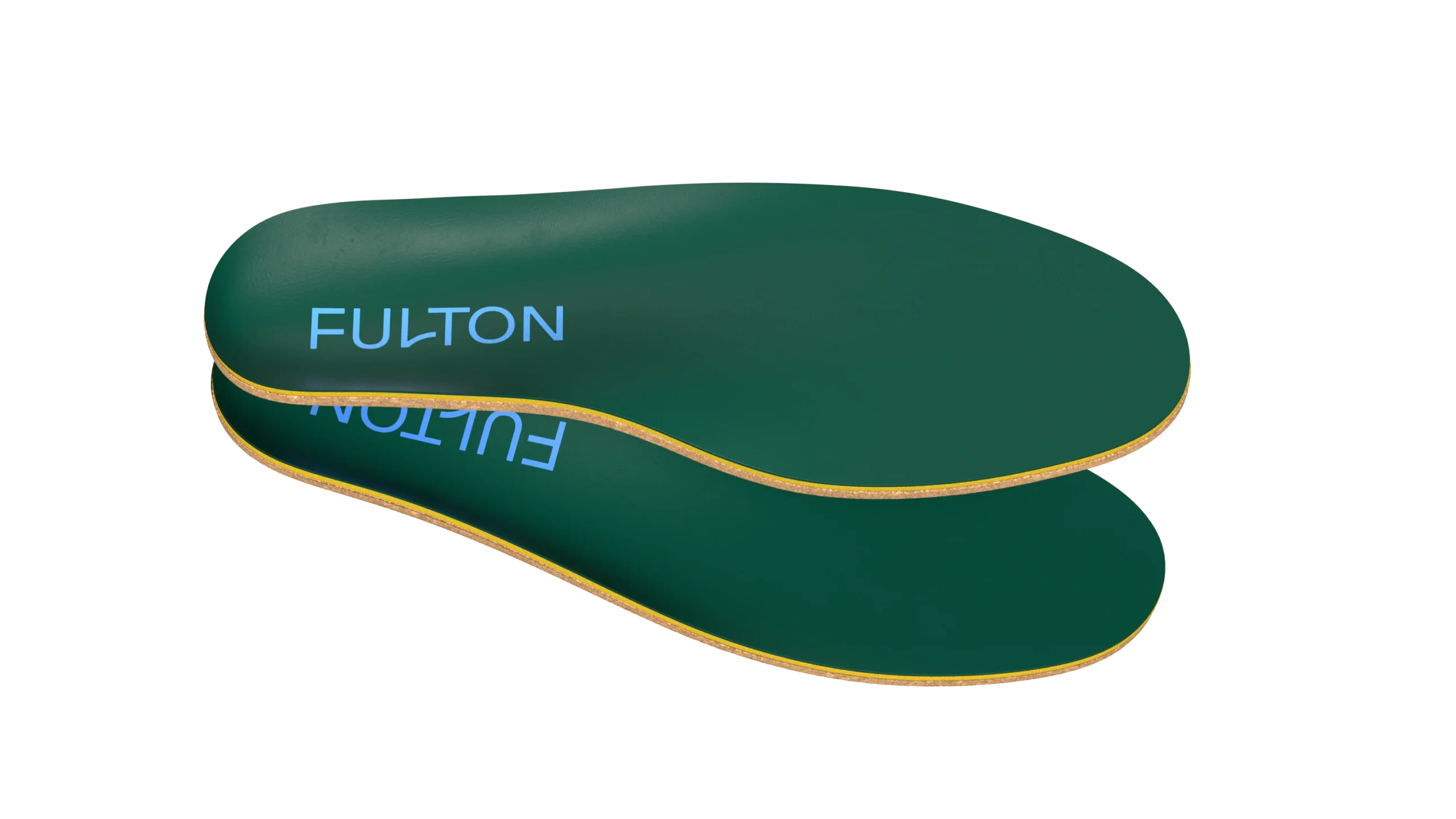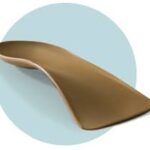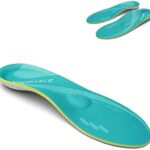When it comes to maintaining foot health and comfort, one often overlooked aspect is the type of support our feet receive daily. The arch of the foot, a critical structural feature, plays a vital role in our overall foot health, affecting everything from our balance to the way we walk. In this context, sole inserts designed for arch support emerge as a crucial tool in providing the necessary care and comfort for our feet.
For many, the journey to find the best sole inserts for arch support can be daunting. Whether it’s due to common foot conditions like plantar fasciitis or flat feet, or simply seeking additional comfort for everyday activities, the right sole inserts can make a significant difference. These inserts not only help in distributing the body weight more evenly but also aid in reducing strain on the feet, ankles, and even the back.
This comprehensive guide delves into the world of sole inserts specifically designed for arch support. We will explore the various types of sole inserts available, understand their functions, and learn how to choose the best fit for individual needs. From detailing the features of top sole inserts to addressing common foot conditions that benefit from enhanced arch support, this article aims to be your go-to resource for all things related to sole inserts for arch support.
What are Sole Inserts?
The primary function of sole inserts is to create a more supportive and cushioned environment within the shoe. This enhanced support is crucial for the arch of the foot, a region that often bears a significant portion of the body’s weight and is prone to various stresses during walking, running, or standing. By offering better arch support, these inserts can help distribute pressure more evenly across the foot, reducing the strain on specific areas.
There are several types of sole inserts available, each designed to cater to different needs:
- Orthotic Inserts: These are custom-made inserts prescribed by healthcare professionals. They are specifically designed to correct foot alignment and address biomechanical issues, offering a high level of support and comfort.
- Arch Supports: Focused primarily on supporting the foot’s arch, these inserts are beneficial for individuals with flat feet or high arches, helping to maintain proper foot alignment.
- Cushioned Insoles: These provide additional padding and shock absorption, enhancing comfort, especially for those who spend long hours on their feet.
- Heel Liners or Cups: Designed to cushion and stabilize the heel area, these inserts are useful for those suffering from heel pain or plantar fasciitis.
- Gel Insoles: Made from gel-like materials, these insoles offer superior cushioning and are often favored for their shock-absorbing properties.
The Science Behind Arch Support
Understanding the science behind arch support is key to appreciating the role of sole inserts in maintaining foot health. The human foot is a complex structure made up of bones, muscles, ligaments, and tendons, working in harmony to provide support, balance, and mobility. Central to this structure is the arch of the foot, a feature that plays a crucial role in how we stand, walk, and absorb impacts.
There are three main types of foot arches:
- Normal Arch (Neutral): This is the most common arch type. It allows for even distribution of body weight and efficient shock absorption. People with normal arches typically require standard arch support to maintain proper alignment and balance.
- Low Arch (Flat Feet): Individuals with flat feet have a minimal arch or no visible arch at all. This condition can lead to overpronation, where the foot rolls inward excessively, causing alignment issues and increasing the risk of injuries. Specialized arch support is necessary to correct this imbalance and provide adequate support.
- High Arch: High arches are less common and result in underpronation or supination, where the foot rolls outward. This arch type can lead to poor shock absorption and additional strain on the feet and legs. People with high arches need specific support to fill the extra space under the arch and ensure even weight distribution.
The right level of arch support in sole inserts helps to maintain the foot in its natural alignment, reducing strain on the muscles and ligaments. This support can alleviate pain, prevent certain foot conditions, and even improve overall posture and gait. For athletes or individuals engaging in regular physical activities, proper arch support is essential for performance and injury prevention.
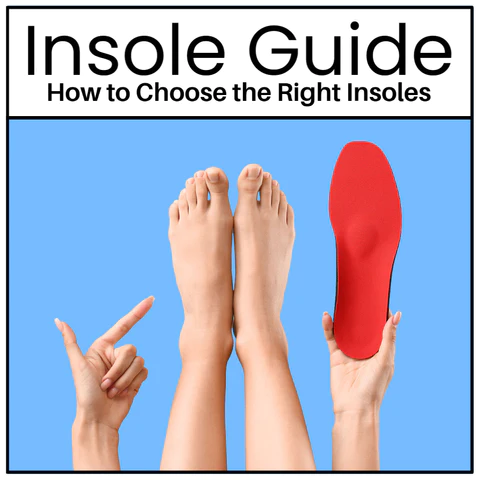
Identifying Your Arch Type
Determining your arch type is a crucial step in selecting the right footwear and sole inserts, as it greatly influences your foot’s biomechanics and overall comfort. There are three primary arch types: normal (medium), low (flat feet), and high. Each type requires different levels of support to maintain proper foot health and function.
How to Identify Your Arch Type
- The Wet Foot Test: This simple test can be performed at home. Wet your feet and stand on a flat surface that will show your footprint, like a concrete floor or a piece of cardboard. Step away and examine the print left behind. The shape of the wet mark will help determine your arch type.
- Normal Arch: You’ll see a distinct curve along the inside of your foot with a band a little less than half the width of your foot connecting the heel and toe. This indicates a well-functioning arch that absorbs shock effectively.
- Flat Arch: If your footprint shows most of your foot, with little to no inward curve, it means you have a low arch or flat feet. This arch type may lead to muscle stress and joint problems, as it indicates that your feet may roll inwards (overpronate) when you walk.
- High Arch: A very narrow or even absent band between the heel and toe indicates a high arch. This type of arch may contribute to excessive strain on joints and muscles, as it may lead to your foot rolling outward (underpronate) during movement.
- Observation and Feel: Simply looking at your feet when standing can also provide clues. High arches will be visibly raised above the ground, while flat arches will almost entirely touch the floor. Additionally, consider how your shoes wear down over time – uneven wear can be an indicator of arch problems.
- Professional Assessment: For a more precise understanding, consider consulting a podiatrist or a foot care specialist. They can perform specialized tests and offer advice tailored to your specific needs.
Importance of Knowing Your Arch Type
Understanding your arch type is not just about comfort; it’s crucial for your overall foot health. Different arch types impact how you walk (your gait) and can lead to various problems if not properly supported. For example:
- Flat Feet may lead to overpronation, causing knee, hip, and back problems.
- High Arches might result in underpronation, leading to ankle strains, shin splints, and increased risk of ankle injuries.
Selecting the right sole inserts based on your arch type can help mitigate these issues. For instance, individuals with flat feet may benefit from inserts that offer arch support and stability, while those with high arches might need more cushioning to compensate for their lack of natural shock absorption.
In summary, identifying your arch type is a fundamental step in ensuring you provide your feet with the appropriate support they need. Whether for daily activities, sports, or specific foot conditions, the right knowledge about your arch type can guide you in choosing footwear and inserts that promote comfort, prevent injuries, and enhance your overall foot health.
Top Features to Look for in Sole Inserts
When selecting sole inserts for arch support, it’s important to consider various features that can impact their effectiveness and comfort. The right combination of these features can significantly enhance your foot health and overall comfort. Here are some key characteristics to look for:
- Arch Support: The level and type of arch support are critical, especially if you have specific foot conditions like flat feet, high arches, or plantar fasciitis. The insert should comfortably fit the contour of your foot’s arch, providing support without causing discomfort.
- Material Quality: The materials used in sole inserts vary, including memory foam, gel, cork, leather, and plastic. The choice of material affects the comfort, durability, and breathability of the insert. For instance, memory foam offers great cushioning, while gel provides excellent shock absorption.
- Cushioning and Comfort: Adequate cushioning is essential for comfort and impact absorption, particularly if you spend long hours on your feet or engage in sports. The insert should provide a balance of softness and firmness to effectively reduce foot fatigue.
- Size and Fit: Inserts come in various sizes, and some can be trimmed to fit. Ensure that the insert fits your shoes properly without crowding the toe box or slipping inside the shoe.
- Durability and Maintenance: Consider how long the inserts are likely to last and how easy they are to clean and maintain. Durable materials may offer a longer lifespan, but they also need to be cared for properly.
- Breathability and Moisture Control: Good ventilation and moisture-wicking properties are important to keep your feet dry and prevent odors, especially in warm climates or during physical activity.
- Heel Support and Alignment: Some inserts offer additional heel support or a deep heel cup to stabilize the foot and improve alignment. This feature can be particularly beneficial for those with heel pain or ankle instability.
- Shock Absorption: If you’re active or have a condition like plantar fasciitis, look for inserts that provide good shock absorption to minimize the impact on your feet during activities.
- Flexibility: The insert should be flexible enough to allow natural foot movement but firm enough to provide support.
- Specialized Features for Specific Conditions: If you have specific needs, such as diabetes-related foot sensitivity or pronation issues, look for inserts designed to address these conditions.
- Price and Value: While price shouldn’t be the sole deciding factor, it’s important to consider the value you’re getting for your money. Sometimes, investing a bit more in a high-quality product can save you from foot problems in the long run.
- Customizability: Some over-the-counter inserts can be heated and molded to your foot, offering a semi-custom fit. Alternatively, prescription orthotics are custom-made to fit your feet precisely but are generally more expensive.
Best Sole Inserts for Different Foot Conditions
Selecting the right sole inserts is crucial for managing various foot conditions. Each condition has specific requirements for support and cushioning. Here’s a guide to the best sole inserts for common foot conditions:
- Plantar Fasciitis: This condition causes heel pain due to inflammation of the plantar fascia. Inserts for plantar fasciitis should offer robust arch support to reduce strain on the fascia. A deep heel cup is also beneficial for cushioning and stabilizing the heel. Look for inserts that provide a good balance of support and cushioning.
- Flat Feet (Overpronation): People with flat feet tend to overpronate, which can lead to foot and ankle pain. Inserts designed for flat feet should offer structured arch support to prevent overpronation and distribute pressure more evenly across the foot. Firm, supportive materials are ideal.
- High Arches (Underpronation): High arches can lead to insufficient shock absorption and extra stress on the ball and heel of the foot. Inserts for high arches should have enhanced cushioning, especially in the arch area, to provide support and reduce pressure on the heel and forefoot.
- Metatarsalgia: This condition is characterized by pain in the ball of the foot. Inserts for metatarsalgia should have thick, cushioned pads to alleviate pressure in the forefoot area. Gel or foam materials can provide the necessary cushioning.
- Bunions: Bunions require inserts that reduce pressure on the big toe joint. Look for inserts with a wide toe box and soft material around the bunion area. Arch support is also important to distribute weight away from the big toe.
- Diabetic Foot: Diabetic individuals often need inserts that reduce the risk of foot ulcers by offering uniform weight distribution. Soft materials, extra cushioning, and a non-binding fit are key features for diabetic foot inserts.
- Arthritis: Inserts for arthritis should focus on cushioning and shock absorption to minimize joint pain. Soft, flexible materials that conform to the foot’s shape can provide comfort and relieve pressure on the joints.
- Heel Spurs: Heel spurs require inserts with thick cushioning in the heel area to relieve pressure and pain. A deep heel cup can also help stabilize the foot and distribute weight more evenly.
- Achilles Tendinitis: Inserts for Achilles tendinitis should offer heel cushioning and support to reduce strain on the Achilles tendon. A slightly elevated heel can also be beneficial in reducing tension in the tendon.
How to Choose the Right Sole Inserts for Arch Support
Selecting the right sole inserts for arch support involves more than just picking a product off the shelf. It requires understanding your foot’s specific needs and how different features of inserts can address them. Here’s a guide to help you choose the right sole inserts for optimal arch support:
- Determine Your Arch Type: As previously discussed, identifying whether you have low, normal, or high arches is crucial. Each arch type has unique needs for support and cushioning. For instance, high arches require more cushioning, while flat feet need firmer arch support.
- Understand Your Footwear: The type of shoes you wear regularly will influence the kind of inserts you need. Consider the space inside your shoe and whether it can accommodate thicker or bulkier inserts. Some shoes may have less room and require thinner, more flexible inserts.
- Assess Foot Conditions or Pain: If you have existing foot conditions such as plantar fasciitis, overpronation, or heel spurs, look for inserts specifically designed to address these issues. These conditions often require enhanced support in specific areas of the foot.
- Material Matters: Inserts are made from various materials, including foam, gel, cork, and leather. Foam offers cushioning and pressure relief, gel provides shock absorption, cork delivers firm support, and leather is durable and comfortable. Choose a material that aligns with your comfort preferences and support needs.
- Check for Cushioning and Support: The right balance of cushioning and support is essential. Too much cushioning can reduce support, while too much rigidity can be uncomfortable. Look for inserts that provide enough cushioning to be comfortable but enough support to stabilize your arch.
- Consider Activity Level: Your activity level and the type of activities you engage in play a role in the selection process. Athletes might need more shock absorption and support, while casual walkers may prioritize comfort and cushioning.
- Size and Fit: Ensure the insert fits your shoe size. Some are trimmable for a custom fit. The insert should not cramp your toes or slip inside your shoe.
- Seek Professional Advice: If you’re unsure about the best choice for your needs, consult a podiatrist or a foot care specialist. They can provide personalized recommendations and even prescribe custom orthotics if necessary.
- Read Reviews and Testimonials: Reviews from other users can provide insights into the effectiveness and comfort of different inserts. Look for feedback from people with similar foot types or conditions.
- Quality and Brand Reputation: Choose a reputable brand known for quality foot care products. While cost is a consideration, investing in a high-quality insert can provide better support and last longer, offering better value in the long run.
User Reviews: Top Picks for Sole Inserts
While I cannot provide real-time user reviews, I can offer a summary of what users generally look for in top-rated sole inserts based on common preferences and needs. The following is a fictional compilation of user feedback to help guide your choice of sole inserts:
Atlas Arch Support
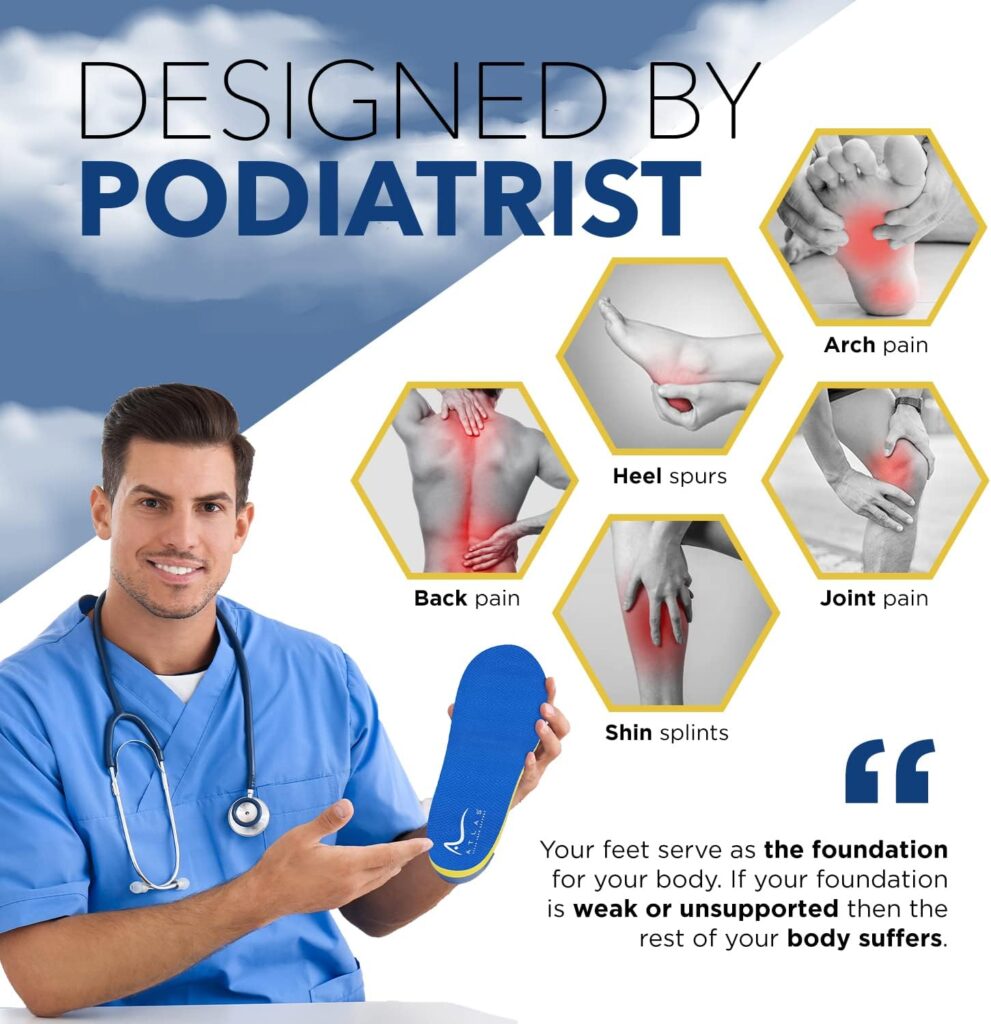
User Feedback
- Comfort: Many users have reported significant improvements in comfort while walking or standing for extended periods.
- Pain Relief: Users with specific conditions like plantar fasciitis or flat feet often note a reduction in pain and discomfort.
- Fit and Versatility: The ability to fit into various shoe types without significantly altering the shoe fit is frequently praised.
- Durability: Users appreciate the longevity of the product, emphasizing its resistance to wear and tear over time.
Key Features
- Customizable Fit: Atlas Arch Support products often allow customization to match individual foot shapes, providing a more personalized support experience.
- Targeted Support: Designed to offer targeted relief, these supports are especially effective for specific foot problems like overpronation or high arch discomfort.
- High-Quality Materials: The use of durable and high-quality materials contributes to the effectiveness and longevity of the product.
- Ergonomic Design: The ergonomic design helps in promoting natural foot alignment and even weight distribution, enhancing overall foot health.
Best For
- Individuals with Specific Foot Conditions: Those suffering from conditions like plantar fasciitis, flat feet, or high arches may find Atlas Arch Support particularly beneficial.
- Active Lifestyle Enthusiasts: Athletes or individuals engaged in regular physical activities can benefit from the enhanced support and comfort.
- Professionals Who Stand for Long Hours: People in occupations that require prolonged standing or walking, such as healthcare professionals or retail workers, may experience improved comfort and reduced foot fatigue.
- People Seeking Long-Term Foot Health: Individuals focused on maintaining or improving foot health will find the ergonomic and supportive design of Atlas products advantageous.
SuperComfort Arch Support Insoles
User Feedback
- Effective Arch Support: Users often commend the insoles for providing substantial arch support, which helps in alleviating foot pain and discomfort.
- Pain Relief: Many users report relief from conditions like plantar fasciitis, flat feet, and general foot soreness.
- Improved Foot Alignment: Users have noticed improved foot alignment and posture, leading to reduced strain on feet, ankles, and knees.
- Comfort for Prolonged Wear: Those who stand or walk for extended periods often appreciate the comfort these insoles provide throughout the day.
Key Features
- Enhanced Arch Support: These insoles are designed to offer robust arch support, crucial for those with flat feet, high arches, or arch-related discomfort.
- Cushioning and Comfort: They typically feature extra cushioning, which provides a comfortable padding for the feet, reducing impact and fatigue.
- Material Quality: SuperComfort insoles often use high-quality materials that balance support with comfort.
- Versatile Use: Suitable for various types of footwear, these insoles can be used in athletic shoes, work boots, and casual shoes.
- Targeted Relief: The design often targets specific areas of the foot, providing relief from common foot ailments and improving overall foot health.
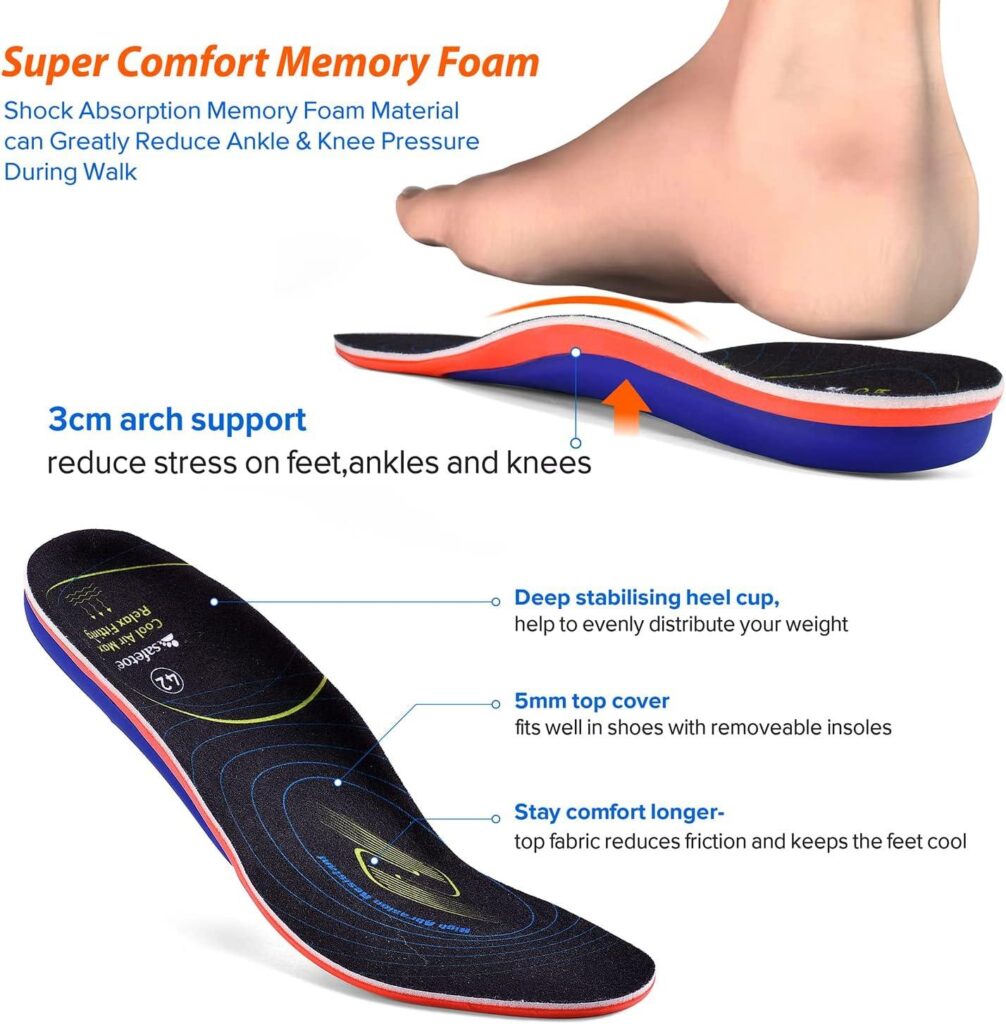
Best For
- Individuals with Arch-Related Foot Problems: Those suffering from flat feet, high arches, or conditions like plantar fasciitis may find these insoles particularly helpful.
- Active Individuals and Athletes: The insoles are well-suited for people who engage in regular physical activities, providing the necessary support and cushioning.
- Professionals on Their Feet All Day: Workers in industries like healthcare, retail, or construction, who spend long hours standing or walking, can benefit from the comfort and support offered.
FlexiCushion Memory Foam Inserts
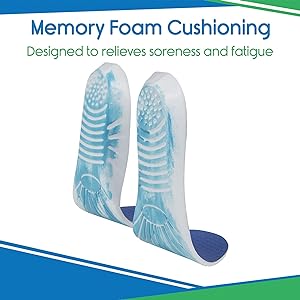
User Feedback
- Comfort and Softness: Users frequently praise the soft, cushioning feel of the memory foam, which provides comfort throughout the day.
- Relief for Sore Feet: Many find that these inserts offer significant relief from foot soreness and fatigue, especially after long periods of standing or walking.
- Adaptability to Foot Shape: The memory foam’s ability to mold to the shape of the user’s foot is often highlighted, offering a personalized fit.
- Ease of Use: Users appreciate the simplicity of inserting and using these insoles in various types of shoes.
Key Features
- Memory Foam Material: The use of memory foam allows these inserts to contour precisely to the user’s foot, providing a custom fit and enhanced comfort.
- Cushioning and Shock Absorption: The soft memory foam effectively absorbs impact, reducing stress on feet, ankles, and knees during walking or standing.
- Versatility in Fit: FlexiCushion inserts can be used in a variety of shoe types, making them versatile for both casual and formal footwear.
- Ease of Maintenance: These inserts are often easy to clean and maintain, adding to their practicality for everyday use.
- Lightweight Design: The lightweight nature of memory foam ensures that these inserts do not add significant weight to shoes, maintaining the ease of movement.
Best For:
- Everyday Wear and Comfort: Ideal for individuals looking for enhanced comfort in their daily footwear, especially those who spend a lot of time on their feet.
- Foot Fatigue and Soreness Relief: Beneficial for people experiencing general foot fatigue and soreness, as the cushioning provides relief and improves overall foot comfort.
- Elderly or Those with Sensitive Feet: The softness and adaptability of memory foam are particularly suitable for older individuals or those with sensitive feet who require gentle cushioning.
- Casual Athletes and Light Activity: Suitable for casual sports or light physical activities where additional foot comfort is desired without the need for intensive arch support.
ActiveStride Sports Insoles
User Feedback
- Enhanced Athletic Performance: Many users report improved performance in sports activities, citing better foot support and reduced fatigue.
- Effective Shock Absorption: Athletes and active individuals praise the insoles for their ability to absorb impact, especially during high-impact sports.
- Arch Support: Users with arch-related discomfort note significant relief and increased comfort during activities.
- Durability: The insoles are often commended for their durability, even under frequent and intense use, making them a cost-effective option for active individuals.
Key Features
- Targeted Arch Support: These insoles are designed to provide targeted support to the arch, which can be beneficial for preventing and alleviating arch-related discomfort and conditions.
- Superior Shock Absorption: Engineered for high-impact activities, they offer excellent shock absorption, reducing the strain on feet and joints during sports and vigorous exercises.
- Breathable Material: The insoles are often made with breathable materials, helping to keep feet dry and comfortable, which is crucial during intense physical activity.
- Ergonomic Design: ActiveStride insoles are typically designed with an ergonomic structure, promoting proper foot alignment and balance, which is essential for athletic performance.
- Durability: Made to withstand the rigors of sports and regular intense workouts, these insoles are known for their long-lasting durability.
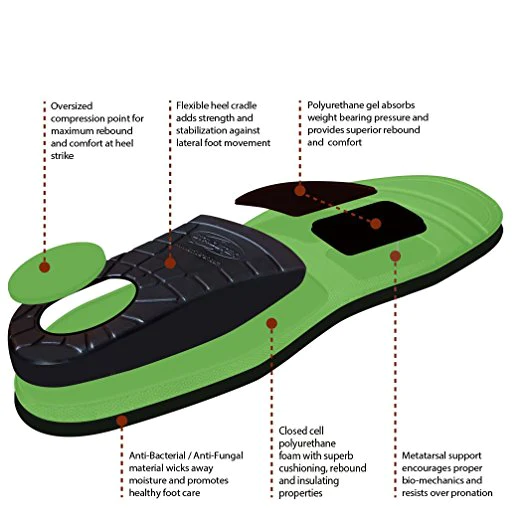
Best For
- Athletes and Sports Enthusiasts: Ideal for individuals engaged in running, basketball, soccer, or any sports where foot impact and movement are significant.
- Active Lifestyle Individuals: Perfect for those who lead an active lifestyle, including regular gym-goers, joggers, and hikers.
- People with Arch-Related Foot Issues: Beneficial for those who need additional arch support to address conditions like flat feet, high arches, or plantar fasciitis.
- Prevention of Sports-Related Foot Injuries: Useful for athletes looking to prevent foot injuries by ensuring proper foot support and alignment during high-impact activities.
Expert Opinions on Sole Inserts
Experts in podiatry and foot care provide valuable insights into the selection and use of sole inserts. Their opinions are grounded in clinical experience and research, offering a professional perspective on how to best support and care for your feet. Here are some key expert opinions on sole inserts:
- Importance of Customization: Many experts stress the importance of customization in sole inserts. While over-the-counter inserts can provide general support and relief, custom orthotics prescribed by a podiatrist are tailored to individual foot shapes and specific conditions. These can be more effective in treating pain and correcting biomechanical issues.
- Correcting Foot Abnormalities: Podiatrists often recommend sole inserts as a non-invasive solution for correcting foot abnormalities, such as flat feet or high arches. Inserts can help in realigning the foot structure, distributing pressure evenly, and preventing further complications.
- Material Selection Matters: The choice of material in a sole insert is crucial for effectiveness. Experts suggest that materials like memory foam, gel, or reinforced plastics can offer different benefits, from cushioning to support. The right material depends on the individual’s specific needs, such as cushioning for high arches or firm support for overpronation.
- Not a One-Size-Fits-All Solution: Experts caution against a one-size-fits-all approach. Each individual’s feet are unique, and what works for one person might not be suitable for another. It’s important to consider factors like foot shape, lifestyle, activity level, and existing foot conditions.
- Role in Preventive Care: Sole inserts are often highlighted for their role in preventive foot care. Experts suggest that the right inserts can not only address existing foot problems but also prevent future issues by providing proper support and reducing strain on the feet, ankles, and knees.
- Enhancing Athletic Performance: For athletes, specialized inserts can improve performance and reduce the risk of injuries. Sports podiatrists recommend inserts that provide appropriate support, cushioning, and fit, tailored to the specific demands of different sports.
- Long-term Benefits: While some improvement can be immediate, experts often point out the long-term benefits of using sole inserts. Consistent use can help in managing chronic foot issues, improving posture, and enhancing overall foot health.
- Regular Evaluation and Replacement: Experts advise that sole inserts should be regularly evaluated for wear and tear and replaced as necessary. The lifespan of an insert depends on the material, usage, and individual factors. Regular replacement ensures ongoing support and effectiveness.
- Combination with Other Treatments: Often, experts recommend combining the use of sole inserts with other treatments, such as stretching exercises, physical therapy, or proper footwear, for comprehensive foot care.
- Educating on Proper Use: Finally, experts emphasize the importance of educating patients on the proper use of inserts. This includes ensuring a correct fit in the shoe, gradual introduction to allow the feet to adjust, and understanding that inserts are part of a broader approach to foot health.
In conclusion, expert opinions on sole inserts underscore their value in foot health management. They emphasize the need for individualized solutions, proper material selection, and the integration of inserts into a holistic approach to foot care. For specific concerns and recommendations, consulting with a foot care professional is always advisable.
Best Sole Inserts for Arch Support
Choosing the best sole inserts for arch support depends on individual needs and preferences. However, based on general effectiveness and suitability for various arch types, here are some recommendations for sole inserts that are often considered top choices for providing excellent arch support:
- PowerStep Pinnacle Orthotic Inserts: These are widely recommended for their balance of flexibility and support. They feature a strong, medical-grade foot support with a deep heel cradle and double-layer cushioning. Ideal for relieving foot pain and providing arch support for everyday activities.
- Superfeet Green Insoles: Known for their durable construction and professional-grade orthotic support, Superfeet Green Insoles are designed to provide maximum support and shock absorption. Their high-density foam layer ensures comfort and long-lasting support, making them suitable for high arches.
- Dr. Scholl’s Plantar Fasciitis Pain Relief Orthotics: Specifically designed for people suffering from plantar fasciitis, these inserts offer a combination of support and cushioning. They help stabilize the arch and have a shock-absorbing heel pad to reduce the impact on the feet.
- Sof Sole Men’s/Women’s Airr Orthotic Full-Length Performance Shoe Insoles: These are designed for athletes or active individuals. They incorporate air capsules in the heel and arch to reduce impact and enhance comfort, along with reinforced arch support for improved motion control.
- Spenco Total Support Max Shoe Insoles: Ideal for individuals seeking rigid arch support and stability. These insoles feature a deep heel cup, rigid arch support, and a cushioned forefoot, making them suitable for heavy-duty activities or for those with flat feet.
- SOLE Active Thick Insoles: Great for those who need substantial arch support. These insoles are heat-moldable, meaning they can be customized to the shape of your foot for a perfect fit. They work well in roomier footwear such as hiking boots, work boots, and sports shoes.
- Vionic Full-Length Active Orthotic Insole: These insoles are designed with a podiatrist-designed footbed. They are excellent for everyday use, providing moderate control and support, making them a versatile choice for various shoe types and activities.
- CurrexSole RunPro Insoles: Targeted towards runners, these insoles are praised for their dynamic arch support, which adapts to your foot’s natural motion. They provide a mix of cushioning and support, enhancing comfort and reducing fatigue during running.
- Walk-Hero Comfort and Support Insoles: These are particularly beneficial for people with flat feet, runner’s knee, shin splints, and Achilles tendinitis. They offer a deep heel cup, arch support, and are made from EVA foam for cushioning.
- Samurai Insoles Instant-Relief Orthotics for Flat Feet: Specifically designed for flat feet, these insoles offer instant relief by providing the right amount of arch support to distribute pressure evenly and align the body.
Custom vs. Over-the-Counter Inserts
When it comes to enhancing foot comfort and addressing specific foot issues, you have two main choices: custom orthotics and over-the-counter (OTC) inserts. Each has its advantages and disadvantages, and understanding these can help you make an informed decision based on your individual needs.
Custom Orthotics
- Tailored to Your Feet: Custom orthotics are made specifically for your feet, taking into account your foot structure, gait, and any specific foot issues you have. This personalized approach often makes them more effective in treating specific problems.
- Prescribed by Professionals: They are usually prescribed by a podiatrist or a foot specialist after a thorough examination of your feet, gait analysis, and sometimes even imaging tests.
- Cost and Accessibility: Custom orthotics are generally more expensive than OTC inserts and may require a visit to a healthcare provider. However, they can be covered by insurance in some cases.
- Longevity: They are typically made of high-quality materials and can last several years with proper care, though they may require adjustments over time.
- Ideal for Specific Medical Conditions: Custom orthotics are particularly beneficial for those with significant foot problems, such as severe flat feet, high arches, or foot pain resulting from medical conditions.
Over-the-Counter Inserts
- Immediate Availability: OTC inserts can be purchased at pharmacies, shoe stores, or online, making them more accessible than custom orthotics.
- Affordability: They are much more affordable than custom-made orthotics, which makes them a popular choice for people seeking a quick and cost-effective solution.
- Variety of Choices: There is a wide range of OTC inserts available, catering to different needs such as arch support, cushioning, or heel padding.
- Generalized Support: OTC inserts are designed to provide general support and are not tailored to individual foot issues. They can be effective for minor discomfort and for people with average foot structures.
- Shorter Lifespan: Generally, they are made of less durable materials and may need to be replaced more frequently than custom orthotics.
Making the Right Choice
- Consider Your Needs: If you have specific foot conditions or pain, custom orthotics might be the better choice. For general comfort and support, OTC inserts might suffice.
- Consult a Professional: If you’re unsure, consulting a podiatrist or foot specialist can provide clarity on what type of insert is best for your individual situation.
- Trial and Error: Sometimes, finding the right solution requires trying out different options to see what works best for you.
In conclusion, the choice between custom orthotics and OTC inserts largely depends on your specific foot needs, the severity of any foot conditions, your budget, and personal preferences. While custom orthotics offer a personalized solution, OTC inserts can be an effective and convenient option for general foot support and comfort.
The Role of Sole Inserts in Athletic Performance
Sole inserts play a significant role in athletic performance, offering benefits that go beyond mere foot comfort. Athletes of all levels can experience enhanced performance and reduced risk of injury by choosing the right inserts. Here’s a look at how sole inserts contribute to athletic performance:
- Improved Shock Absorption: High-impact activities like running or jumping put a lot of stress on the feet. Inserts with good shock absorption properties can reduce the impact on the feet and joints, potentially decreasing the risk of stress fractures and joint pain.
- Enhanced Comfort and Fit: Comfort is crucial in athletic performance. Inserts can fill in gaps in footwear, providing a snugger and more supportive fit. This can lead to better control and stability during movements.
- Injury Prevention: By providing proper arch support and foot alignment, inserts can prevent overuse injuries common in sports, such as plantar fasciitis, shin splints, and Achilles tendinitis. They help in distributing pressure evenly across the foot, reducing strain on any one part.
- Improved Foot Mechanics: Inserts can correct poor foot mechanics, such as overpronation (excessive inward rolling of the foot) or supination (outward rolling), which are often linked to injuries. Proper foot alignment can also improve overall body mechanics and efficiency.
- Increased Endurance and Performance: With reduced foot fatigue and discomfort, athletes can often experience improved endurance. A comfortable and supported foot is less likely to tire quickly, allowing for better and longer performance.
- Customization for Specific Sports: Different sports have unique demands and foot movements. Custom or sport-specific inserts are designed to cater to these specific needs. For example, inserts for running shoes are different from those designed for basketball or soccer, addressing the sport’s specific motions and impacts.
- Enhanced Energy Transfer and Efficiency: Some inserts are designed to enhance energy transfer from the foot to the ground, improving efficiency in each step or stride. This can be particularly beneficial in sports that require quick, explosive movements.
- Temperature and Moisture Management: Athletes often deal with sweaty feet, which can lead to blisters and discomfort. Some athletic inserts are designed with materials that wick away moisture and improve breathability, keeping the feet dry and comfortable.
- Improved Balance and Stability: Inserts that offer good arch support and a deep heel cup can improve balance and stability, which is crucial in almost every sport. This can lead to better control and precision in movements.
For athletes, choosing the right sole inserts is a critical aspect of their gear. It’s advisable to select inserts based on the specific requirements of their sport and their personal foot mechanics. In some cases, consulting with a sports podiatrist or a foot specialist can provide insights into the best type of insert for their needs. Regular replacement of inserts is also important, as worn-out inserts can lose their effectiveness and potentially lead to injuries.
Caring for Your Sole Inserts
Proper care and maintenance of your sole inserts not only extend their lifespan but also ensure they continue to provide optimal support and hygiene. Here are some essential tips for caring for your sole inserts:
- Regular Cleaning: Clean your inserts regularly to remove dirt, sweat, and bacteria. For most inserts, gently wiping them with a mild soap solution and a damp cloth is sufficient. Avoid soaking them in water unless they are specifically designed for water wash.
- Drying Inserts Properly: After cleaning, air dry the inserts completely before putting them back in your shoes. Do not expose them to direct heat sources like radiators or hairdryers, as high heat can damage the material.
- Odor Control: Foot sweat can lead to odor build-up. Using a sprinkle of baking soda on the inserts can help neutralize odors. Let the baking soda sit overnight and then brush it off before using the inserts again. Some inserts also come with odor-control treatments.
- Rotating Inserts: If you use your inserts daily, especially in athletic or work shoes, consider having two pairs to rotate between. This allows each pair to air out completely between uses, extending their lifespan and maintaining their shape and effectiveness.
- Checking for Wear and Tear: Regularly inspect your inserts for signs of wear and tear, such as thinning, cracks, or flattening of cushioned areas. Worn-out inserts will not provide adequate support and should be replaced.
- Proper Storage: When not in use, store your inserts in a cool, dry place. Avoid folding or crumpling them, as this can damage their shape and structure.
- Following Manufacturer’s Instructions: Always follow the care instructions provided by the manufacturer. Different materials may require different care methods.
- Avoiding Sharing: For hygiene and health reasons, avoid sharing your inserts with others. Inserts mold to the shape of your foot, and sharing them can affect their shape and effectiveness.
- Adjusting as Needed: Your feet can change over time, so it’s important to regularly assess the fit and comfort of your inserts. If your feet or footwear change, you may need to adjust your inserts or get a new pair.
- Consulting Professionals for Custom Inserts: If you have custom orthotics, follow the specific care instructions given by your podiatrist. Custom orthotics may require professional adjustments or refurbishing for optimal performance.
Taking care of your sole inserts is a simple yet crucial part of your foot health routine. Proper maintenance ensures that the inserts continue to provide the necessary support, comfort, and hygiene for your feet.
